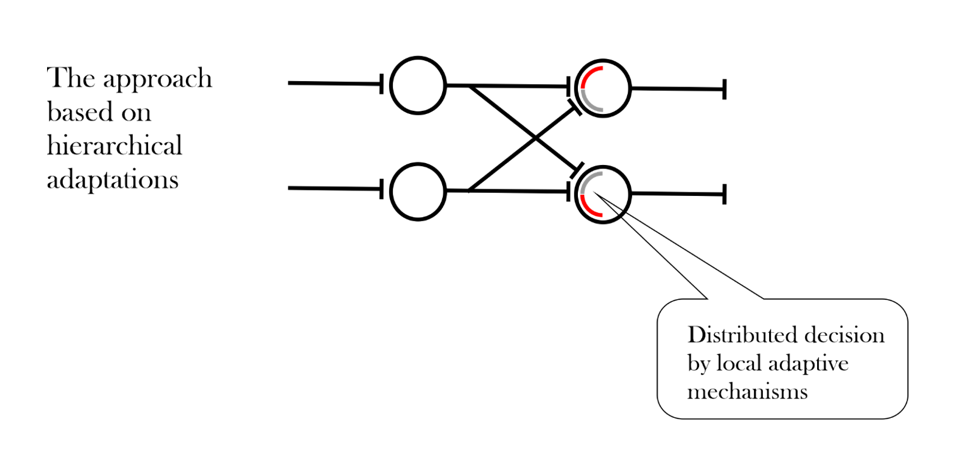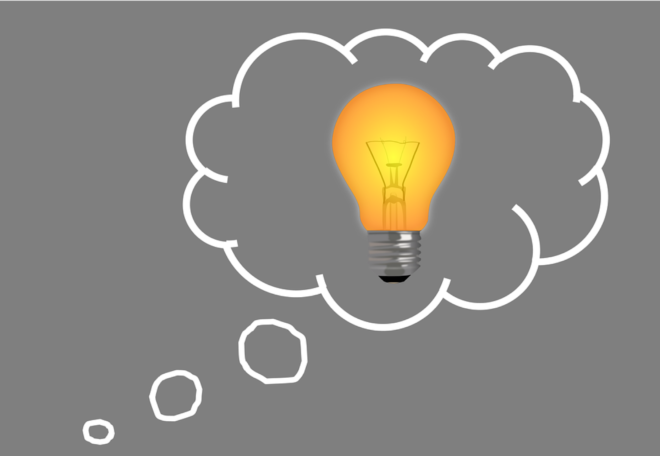How does the brain store concepts and activate them in a contextual manner? AI ignores concepts, connectionist models of the brain ignore concepts. What can explain them?
In my preceding post I talked about concepts, something that connectionist models of the brain do not explain and AI technology does not capture. We also saw that concepts profit from good context: The way concepts are implemented in the brain works well with the highly contextual world in which we live. As a result, we humans communicate most efficiently when we tell stories to each other, which cannot be said for our AI. The brain is sort of a context machine (Nikolić, 2010).
In this post I put forward the idea that concepts rely heavily on the brain’s fast adaptive mechanisms, [see previous post]. As neurons are able to quickly adapt and possibly also able to learn how to adapt, these fast adaptations may be at the center of conceptual capabilities of the nervous system.
How can fast adaptive mechanisms activate a concept?
Fast adaptations may be central for enabling both the ability of the brain to activate and switch concepts and the ability of the brain to deal so effectively with the context. We have seen previously that fast adaptations have potentially the capability to reroute information flow in the brain, which can be illustrated by the following picture:
 Figure 1. Dynamical routing achieved by local adaptations as would follow from the theory of hierarchical adaptations (aka practopoiesis). Red: the neuron has adapted to those inputs and is unresponsive. Gray: the neuron passes those inputs. See a previous post for more information.
Figure 1. Dynamical routing achieved by local adaptations as would follow from the theory of hierarchical adaptations (aka practopoiesis). Red: the neuron has adapted to those inputs and is unresponsive. Gray: the neuron passes those inputs. See a previous post for more information.
But how can such adaptations activate something as elaborate as a concept? Let us consider the concept of a grandmother. The concept of a grandmother-in-general is an abstract one, but we can begin with a more concrete version by understanding the concept of a particular grandmother. Anyhow, all abstract concepts are preceded by concrete ones. Therefore, let us consider what may be happening with the brain’s fast adaptive mechanisms when someone is meeting their own grandmother.
As mentioned, fast adaptations bias our neural networks towards a certain type of information flow. This can have impact on how we perceive, attend and eventually make decisions. In case of a grandmother, we may be re-wired such that we more easily trigger behaviors that we anyway typically do while interacting with our grandmother. That is, the brain may have learned to adapt such that it makes us ready for interaction with our grandmother. For example, this preparation may begin with the pitch of our voice. People often change the pitch of their voice depending to who they speak to. A different pitch of voice may be used for family members as opposed to strangers, for the boss as opposed to an equal or underling (Leongómez et al. 2017), for a child as opposed to an adult, for an adversary as opposed to a friend, or simply to express politeness (Loveday 1981). A person could easily have one voice for public and another for private conversations. It is thus not surprising that someone could have “their grandmother” voice. This could potentially be a unique pitch of voice used only to speak to one’s grandmother. Of course, in most cases such voice changes occur unconsciously.
Fast adaptations of those neurons that are normally responsible for adjusting the pitch of our voice may be the ones that prepare us for speaking to our grandmother. For example, these could be the neurons that have a direct control of the relevant muscles in the speech organ.
The grandmother example
Let’s say we are hearing a voice of a grandmother in another room, which we know is a clear sign that she will soon be entering the room. Hence, a conversation with her is about to commence. By applying rapid adaptations, the brain may be preparing for this imminent verbal interaction.
But not only does the pitch of voice adjust. The auditory system of the person may adjust too. We may need to get ready for listening to a certain pitch of voice—that of the grandmother; perhaps the grandmother also has a special voice that she uses for us; the fast adaptive mechanisms of her brain may be busy preparing as well. Just before she grabs the handle of that door, she may be all ready to talk to us.
But things other than voice may be adjusted too. Your grandmother may be speaking with a certain accent or a dialect that you may need to get ready for before you can effectively understand what she is saying. Again, to “reload” readiness to understand a given dialect, your brain may be executing a set of fast neural adaptations. As in the figure above, these adaptations could favor certain directions of information flow throughout the nervous system and disfavor other directions.
For example, what if your grandmother pronounces the word “message” as “massage”? She may be French. In that case, your brain needs to get ready to reroute activations in a way consistent with how your grandmother speaks. And this must be flexible i.e., context dependent. Only when you speak to your grandmother, massages should become messages. When you speak to anyone else, massages are massages. This ability to be flexible is critical. Otherwise, you may get too high expectations when your grandmother tells you “I have sent you a massage”.
But there is also more to be adjusted. There are more aspects in which fast adaptive mechanisms can be of help when talking to your grandmother. For example, conversations with a grandmother may revolve around a certain set of topics. One’s grandmother may like a lot to talk about her grandchildren. Another one may like to bring up cooking recipes. Yet another grandmother may want to talk about submarines (there is no reason why a grandmother would not be a fan of submarines or not having had a career as a captain of a submarine), and so on. Having known your grandmother for years, your brain may find it useful to prepare not only for the pitch, accent and dialect, but also for using the necessary vocabulary. That way, fast adaptations may bias your brain not only to hear certain words, but also to generate a set of words. Examples of those words may be apple pie, oven or periscope. Once you start the conversation, these words will come easy to you. Why? Because your brain has gotten them ready for you by using fast adaptations.
So, where is a concept here?
The basic idea of my theory (Nikolić 2015) is that all these fast adaptations responsible for pitch, dialect, vocabulary and other things, collectively prepare you to interact with your grandmother, and that this constitutes the activation of a concept of your grandmother. There is nothing more and nothing less to a concept but the described fast adaptations that prepare you for the things to come.
Your concepts get activated through fast adaptations, which are executed in a distributed manner across neurons scattered throughout the entire nervous system—if not even including adaptations of cells other than neurons (but this is a topic for another post). That way, activations of concepts correspond to rewiring of your neural network making it ready for a certain task ahead—the task that has to do with the concept just activated.
But this does not answer the question of where the concepts lie before they get activated. Where are concepts sitting when dormant? If we are not interacting with our grandmother and not even thinking of her but doing something completely unrelated, our grandmother is not forgotten. Her concept is only not being activated. Where is this non-activated grandmother concept stored in the brain?
My proposal is that concepts are stored within the rules for fast adaptations. The idea is that a neuron does not adapt indiscriminately to every input. Instead, a neuron will adapt to some inputs more readily than to others. This difference in adapting as a function of the type of input, can be described as neuron’s rule for adaptation. The idea is that neurons have rules and that these rules constitute dormant concepts.
Getting down to specifics
Of course, these rules cannot be inborn i.e., genetically predetermined. As concepts are something that we learn, this means that also the rules for fast adaptations need be learned (see another blog post that covers the learning topic). To empirically support the idea of learned fast adaptations, we recently reported evidence that fast adaptations in vision become more efficient with practice . In my future posts, to convince you, it will be necessary to discuss more the learning process of such adaptations and the role their global interactions play in that process.
References
Leongómez, J. D., Mileva, V. R., Little, A. C., & Roberts, S. C. (2017). Perceived differences in social status between speaker and listener affect the speaker’s vocal characteristics. PLoS one, 12(6), e0179407.
Loveday, L. (1981). Pitch, politeness and sexual role: An exploratory investigation into the pitch correlates of English and Japanese politeness formulae. Language and Speech, 24(1), 71-89.
Nikolić, D. (2010). The brain is a context machine. Review of Psychology, 17(1), 33-38.
Nikolić, D. (2015). Practopoiesis: Or how life fosters a mind. Journal of Theoretical Biology, 373, 40-61.
This is a part on the blog series on mind and brain problems by Danko Nikolić. To see the entire series, click here.


















